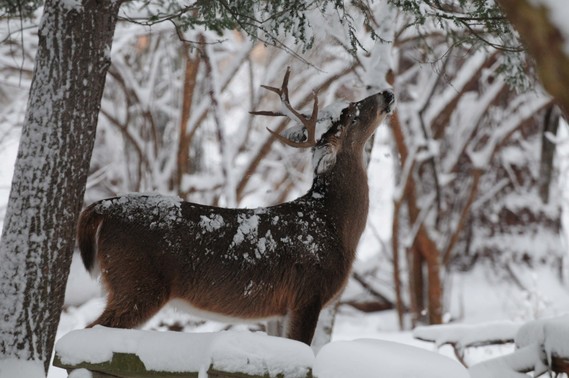
Hunting seasons in December
Deer Muzzleloader: Dec. 3–18
Wild Turkey Fall Archery: Dec. 3, 2022–Jan. 1, 2023
Pheasant (Cock only): Closes Dec. 15
Dove: Dec. 17, 2022–Jan. 2, 2023
Crow: Dec. 13, 2022–March 1, 2023
Snipe: Closes Dec. 16
Quail (north of Interstate 74): Closes Dec. 15
Quail (south of Interstate 74): Closes Jan. 10, 2023
Ducks (North Zone): Closes Dec. 11, reopens Dec. 26, 2022–Jan. 3, 2023
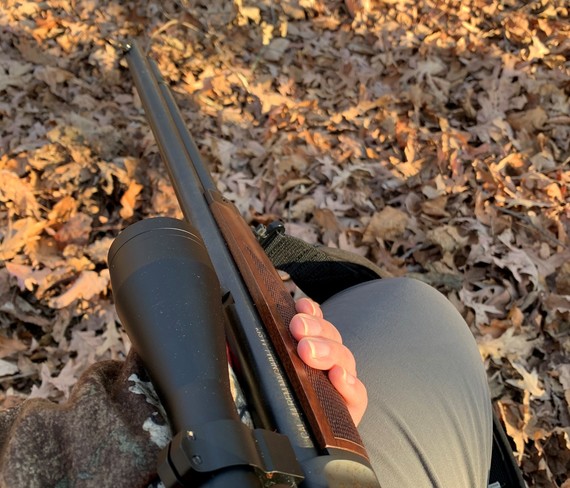
Grab your muzzleloaders and go hunting
‘Tis the season for deer hunting! Muzzleloader season is Dec. 3–18. Make sure to follow the regulations for firearms as you participate this year:
Muzzleloading rifle/shotgun:
Barrel caliber: .44†minimum
Bullet diameter: .357†minimum
- powder and bullet loaded from muzzle and single bullet*
- saboted bullets permitted
- multiple barreled guns permitted
*can have powder loaded from the breech end only during youth and firearms seasons
Muzzleloading handgun:
Barrel length: 12†minimum, measured from the base of the breech plug (excluding tangs and other projections to the end of the barrel, including the muzzle crown)
Barrel caliber: .50†minimum
Bullet diameter: .44†minimum
• loaded from muzzle and single shot
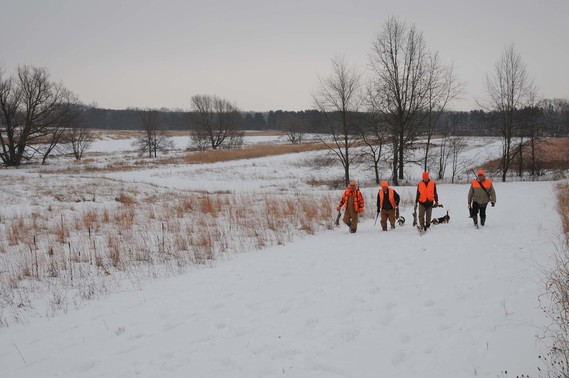
Hunting, without a doubt
There’s no need to worry about anything this hunting season! We have all your resources lined up for you. For questions about equipment, regulations, or which license you need, use our Deer Hotline by emailing INDeerHotline@dnr.IN.gov or calling 812-334-3795, 8:30 a.m. to 4 p.m. ET, Monday through Friday.
For questions related to the CheckIN Game system, your online license system account, license-purchasing errors, or deer control permits, email inhuntfish@dnr.IN.gov or call 317-232-4082.
To report hunting violations or trespassing, contact your law enforcement district using the information here or Central Dispatch at ICODispatch@dnr.IN.gov or 812-837-9536.
To report a poacher, call 1-800-TIP-IDNR or use this form.
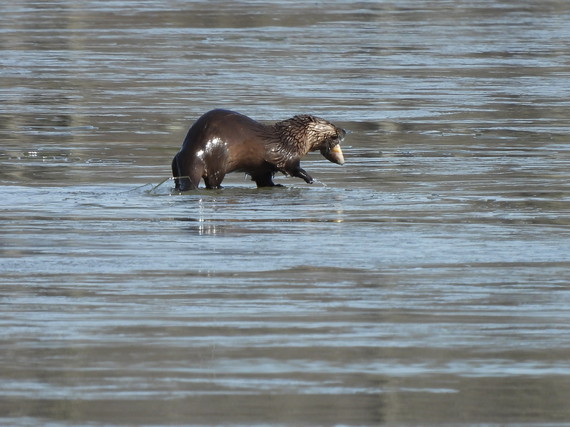 It’s time for trapping season! See the trapping dates for each season below. It’s time for trapping season! See the trapping dates for each season below.
Red & Gray Fox: Oct. 15, 2022 – Jan. 31, 2023
Coyote & Striped Skunk: Oct. 15, 2022 – March 15, 2023
Raccoon & Opossum: Nov. 8, 2022 – Jan. 31, 2023
Beaver: Nov. 15, 2022 – March 15, 2023
Mink, Muskrat & Long-Tailed Weasel: Nov. 15, 2022 – Jan. 31, 2023
River Otter: Nov. 15, 2022 – March 15, 2023
Check in your game
The Indiana CheckIN Game system allows hunters and trappers to check in their harvested game from any device connected to the internet. You will receive a confirmation number you must write down on a temporary transportation tag for the harvested game species. Be sure to check your information is accurate before submitting.
For questions related to the CheckIN Game system, email inhuntfish@dnr.IN.gov or call 317-232-4082.

Ice bites: Let the ice fishing begin
Seasons change but your fishing habits don’t have to—if you have the right equipment! As Indiana’s waters cool, you can turn your attention to ice fishing. If you plan to ice fish, be sure to put your safety first. Follow these tips for a safe and successful ice fishing season:
- Fish with a partner so that someone can call for help in case of an emergency.
- Carry ice picks to assist in pulling yourself out if you happen to fall through the ice.
- Wear ice cleats to avoid slipping and falling on the ice and possibly getting hurt.
- Tell others where you will be fishing and when you expect to be home.
- Wear a flotation device and carry a rope in case of an emergency.
For more information on ice fishing, visit our Fishing Guide. Looking for places to fish? Visit our Where to Fish Map.

Deer data is here
Indiana hunters multiplied by all their harvest equals a lot of data. Keep track of DNR’s current harvest data and comparisons to previous seasons with our handy dashboard, which is updated daily throughout deer season. While the green bars indicate the season-to-date comparison to previous seasons, the blue bars illustrate the previous season counts after the current date. The numbers at the top show the harvest season totals.
Have questions about deer seasons or regulations? Email INDeerHotline@dnr.IN.gov or call 812-334-3795, 8:30 a.m. to 4 p.m. ET, Monday through Friday.
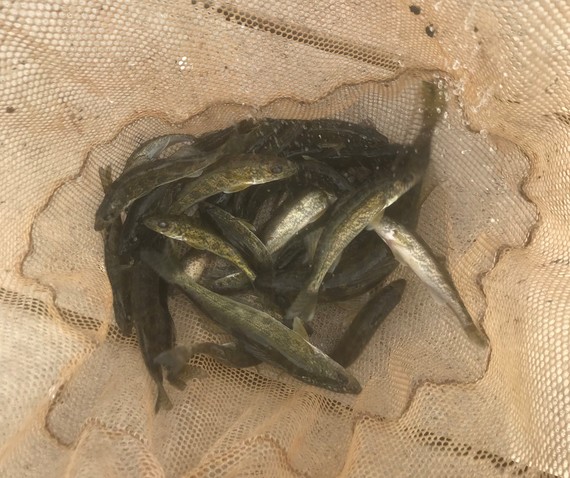
Two years of watching walleye
Indiana is in its second year of advanced walleye fingerling production. The fingerlings are raised at Cikana State Fish Hatchery (SFH) until they reach 1.5-2.0 inches in length. Then they are transferred to Fawn River SFH where the goal is to raise 30,000 each year, ranging in length from 6-8 inches.
This year Fawn River SFH exceeded expectations and produced 42,104 walleye. Eighty percent of the fish measured 4 to 6 inches, while 17% exceeded 6 inches. Once the walleye were ready for release, hatchery staff stocked them in a total of 16 different bodies of water across northern Indiana. In the SFH, the walleye are able to mature without the threat of predation, which gives them time to outgrow predators. The walleye stockings increase their population as well as their survival rate. Their presence helps their ecosystem thrive.
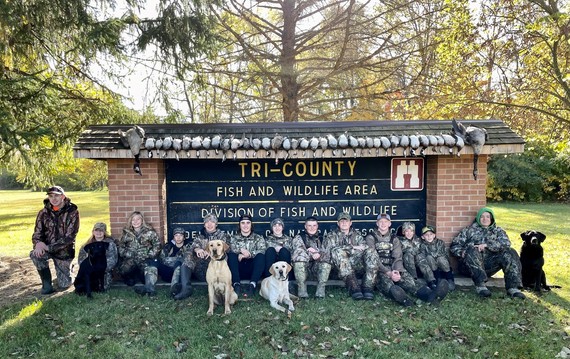
Youth Hunt fun with DNR partners
Waterfowl hunting is for everyone—any age fits the bill. Each year, Tri-County Fish & Wildlife Area (FWA) partners with the Wawasee Chapter of Ducks Unlimited (DU) with the goal of providing a positive and meaningful first-time waterfowl hunting experience to youth who do not have regular opportunities to hunt. This year marked the 10thannual DU youth waterfowl hunt. Volunteers from the Wawasee Chapter taught 14 youth hunters firearms safety, waterfowl biology, and waterfowl hunting.
The partnership has provided more than 125 hunting opportunities to youth in its area. Tri-County FWA and the Wawasee Chapter of DU look forward to providing more opportunities for youth hunts in the future.

Sugar Ridge FWA shooting range improvements
Attention shooting sports enthusiasts: Sugar Ridge Fish & Wildlife Area (FWA) welcomed two new pistol ranges in a ribbon cutting ceremony at the end of October. The new ranges, a 7-yard and a 10-yard, feature covered shooting stations, concrete pads to the target holders, and wire mesh dividers between shooting stations. In addition to these new ranges, the original ranges from 1983 have been upgraded to include sidewalks to all shooting shelters, target holders, fencing, and other necessary safety upgrades.
Because of the excise taxes on shooting equipment, shooting sports enthusiasts are integral to maintaining funding for habitat restoration, species management, and hunter and angler education. Sugar Ridge FWA welcomes all new and returning visitors to the updated range.
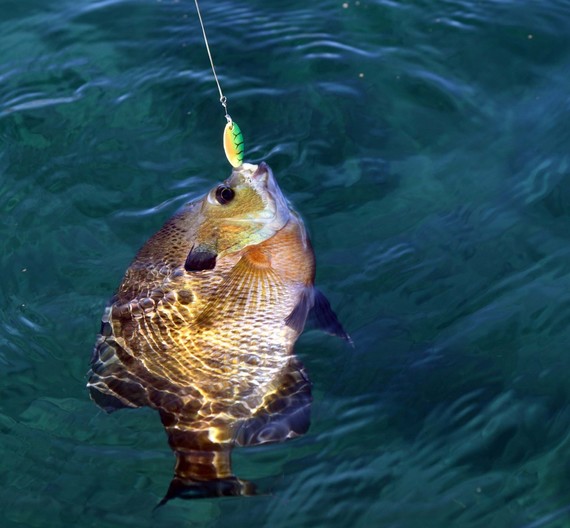
Fishing for data? We’ve got you covered
Trade your reels for drumsticks and give us a drumroll, please! Our 2022 Licensed Angler Survey (LAS) results are here. In April, we emailed the LAS to anglers who purchased an Indiana fishing license during the 2021-2022 license year. More than 17,000 anglers participated.
Through a blend of social science and biological science, DNR incorporates data and the desires of anglers when making fish management decisions. As we work through the data, we invite you to view selected results through our interactive dashboard. Before the music stops, we’d like to thank our anglers who participated in our survey. Now go fish!
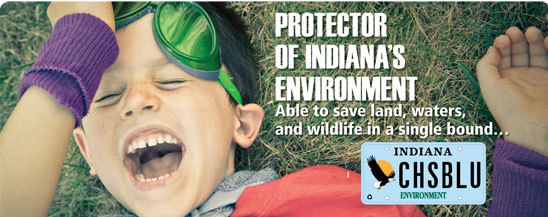
Give back to your favorite natural resources with the Environmental License Plate
Share your love for natural resources everywhere you go by purchasing the blue Environmental plate. By doing so, you help preserve Indiana’s natural heritage, which includes outdoor recreation areas such as state parks, nature preserves, fish & wildlife areas, historic sites, and much more.
All funds received from plate renewals go toward protection and conservation of Indiana’s land, waters, and wildlife.
Ready to help keep Indiana wild?
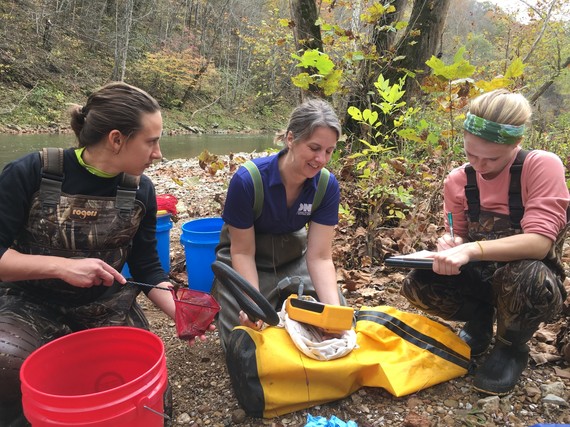
Working together with Indiana’s Nongame Wildlife Fund
This year marks the 40th anniversary of the Indiana Nongame Wildlife Fund. To celebrate, we’re sharing a series of 40 stories across 12 themed months. Our most recent stories spotlight the partnerships that help support the protection of nongame species. Your donations to the Nongame Wildlife Fund help continue these partnerships that protect rare and endangered species and their habitat.
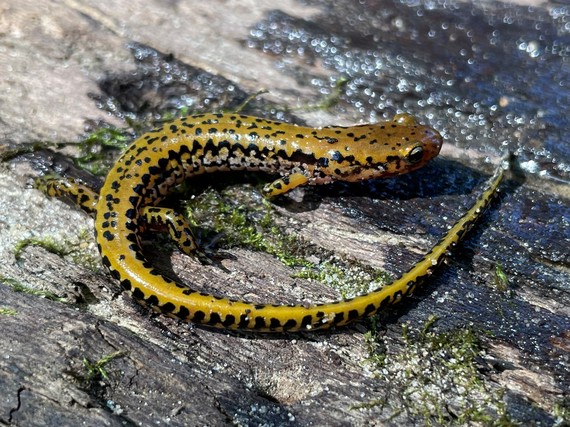
Rare salamanders found along lower Wabash River
In September, DNR biologists found two species of salamander, the long-tailed salamander and southern two-lined salamander, in Knox County, marking the first time since the 1800s that either has been documented along the lower Wabash River.
While both species are more widespread in other parts of southern Indiana, the small, rocky streams they inhabit are less common along the lower Wabash. Following this discovery, additional surveys conducted in parts of Knox, Posey, and Sullivan counties revealed more populations of southern two-lined salamanders; however, Knox County contains the only known location of a long-tailed salamander population in the region.
Salamanders and other amphibian surveys conducted by DNR biologists are supported by the Nongame Wildlife Fund. Contributions to this fund support a variety of rare and endangered wildlife.
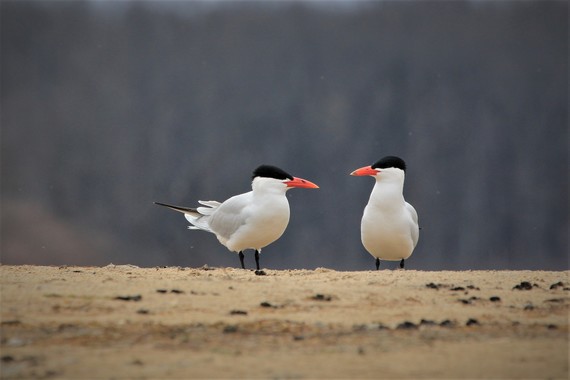
Purchase a present for Indiana’s wildlife
The Indiana Nongame Wildlife Fund supports habitat management and conservation efforts for more than 160 species of greatest conservation need. Donations have helped support the recovery of the bald eagle and river otters, as well as the work to increase the numbers of osprey, barn owls, and Eastern hellbenders in the state. See below the kinds of tools and equipment your donation makes possible:
- $10 – buys a band for a peregrine falcon so we can learn where they live and how long they survive
- $50 – buys a handcrafted least tern decoy to use to attract these rare birds to safe nesting islands
- $100 – buys a radio collar used to follow the success of a released Allegheny woodrat
- $150 – buys a barn owl nest box to replace lost nesting habitat
- $200 – buys a lake sturgeon transmitter used to find and protect their spawning habitat
These wildlife species and their habitats are essential to our quality of life, from improving environmental health to providing opportunities to see beautiful and unique animals across Indiana. Consider donating today.
Recent news releases
Rainbow trout to be stocked in Brookville Lake tailwater
LARE applications due Jan. 15, 2023 |